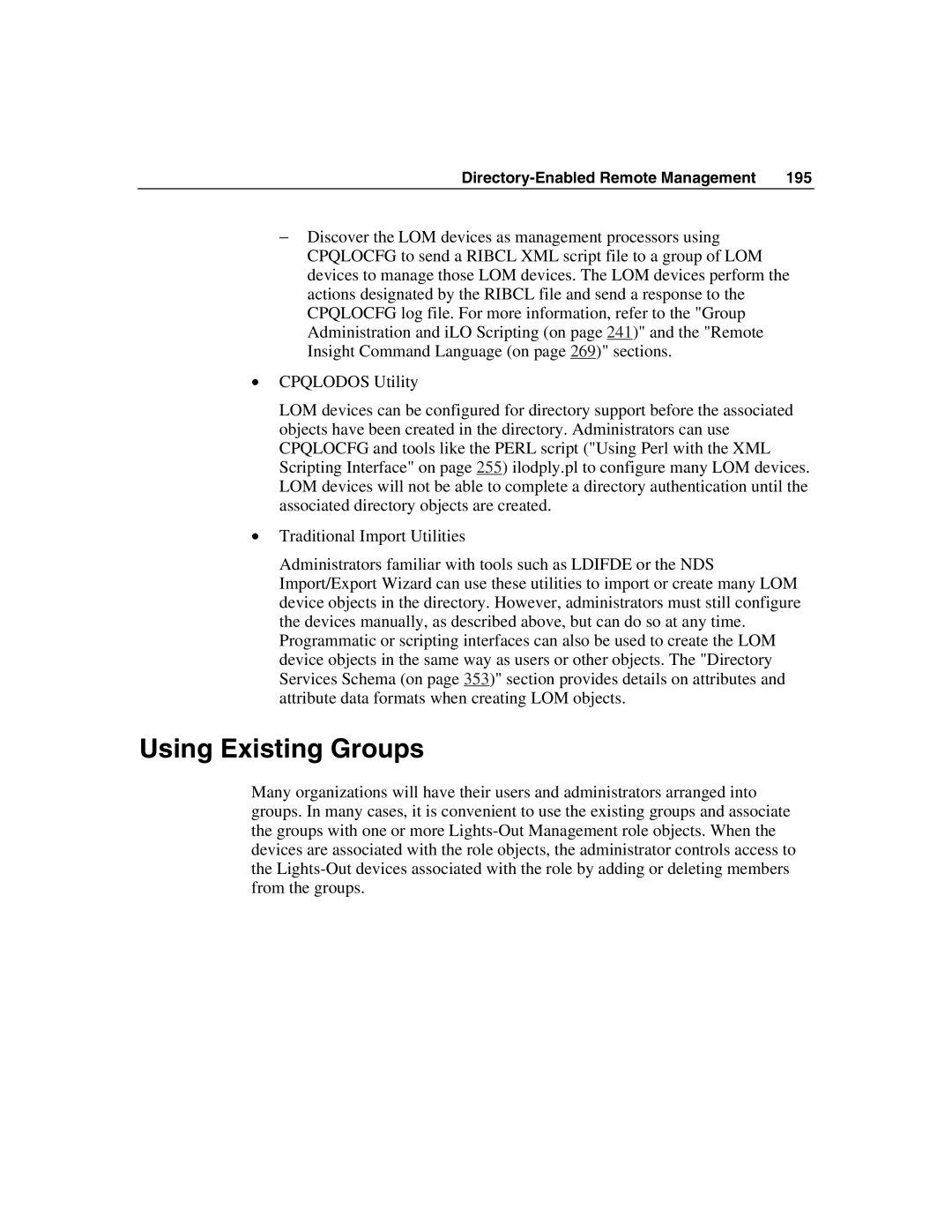195 |
−Discover the LOM devices as management processors using CPQLOCFG to send a RIBCL XML script file to a group of LOM devices to manage those LOM devices. The LOM devices perform the actions designated by the RIBCL file and send a response to the CPQLOCFG log file. For more information, refer to the "Group Administration and iLO Scripting (on page 241)" and the "Remote Insight Command Language (on page 269)" sections.
•CPQLODOS Utility
LOM devices can be configured for directory support before the associated objects have been created in the directory. Administrators can use CPQLOCFG and tools like the PERL script ("Using Perl with the XML Scripting Interface" on page 255) ilodply.pl to configure many LOM devices. LOM devices will not be able to complete a directory authentication until the associated directory objects are created.
•Traditional Import Utilities
Administrators familiar with tools such as LDIFDE or the NDS Import/Export Wizard can use these utilities to import or create many LOM device objects in the directory. However, administrators must still configure the devices manually, as described above, but can do so at any time. Programmatic or scripting interfaces can also be used to create the LOM device objects in the same way as users or other objects. The "Directory Services Schema (on page 353)" section provides details on attributes and attribute data formats when creating LOM objects.
Using Existing Groups
Many organizations will have their users and administrators arranged into groups. In many cases, it is convenient to use the existing groups and associate the groups with one or more
